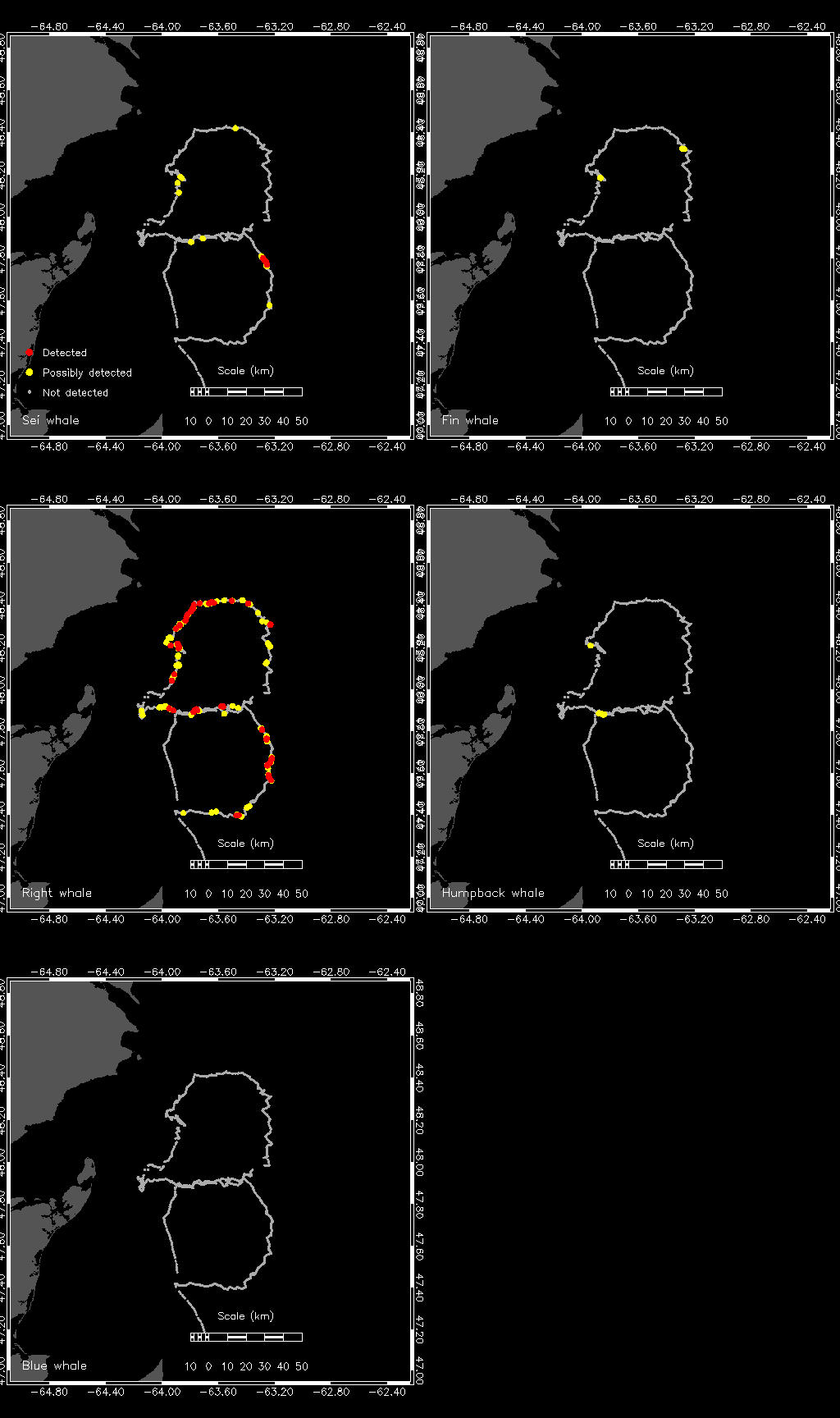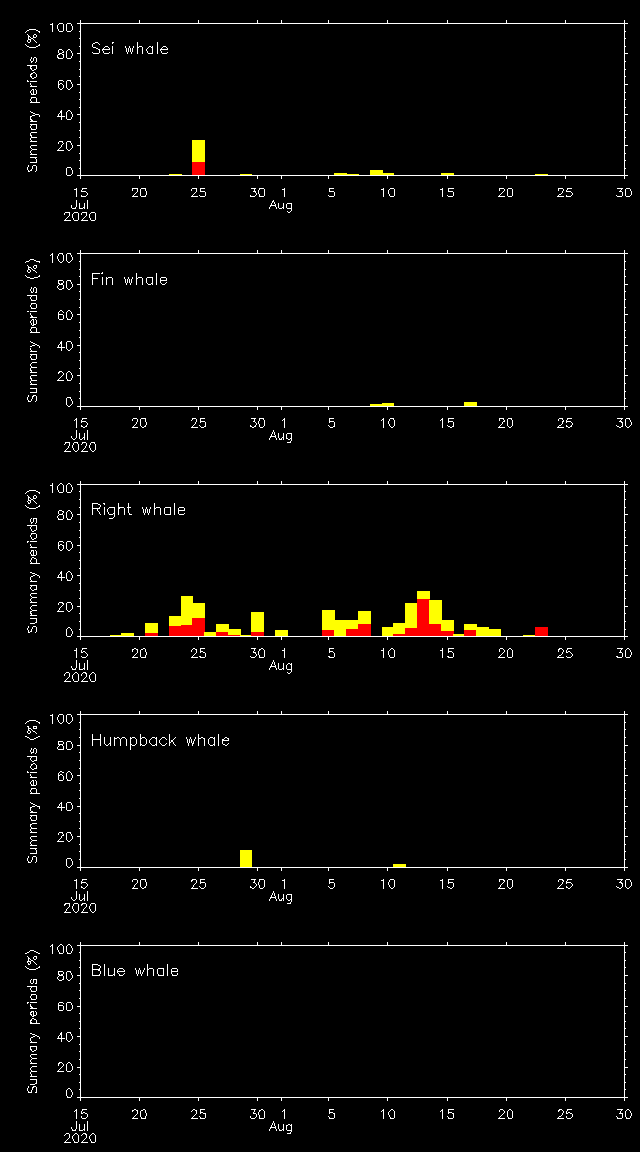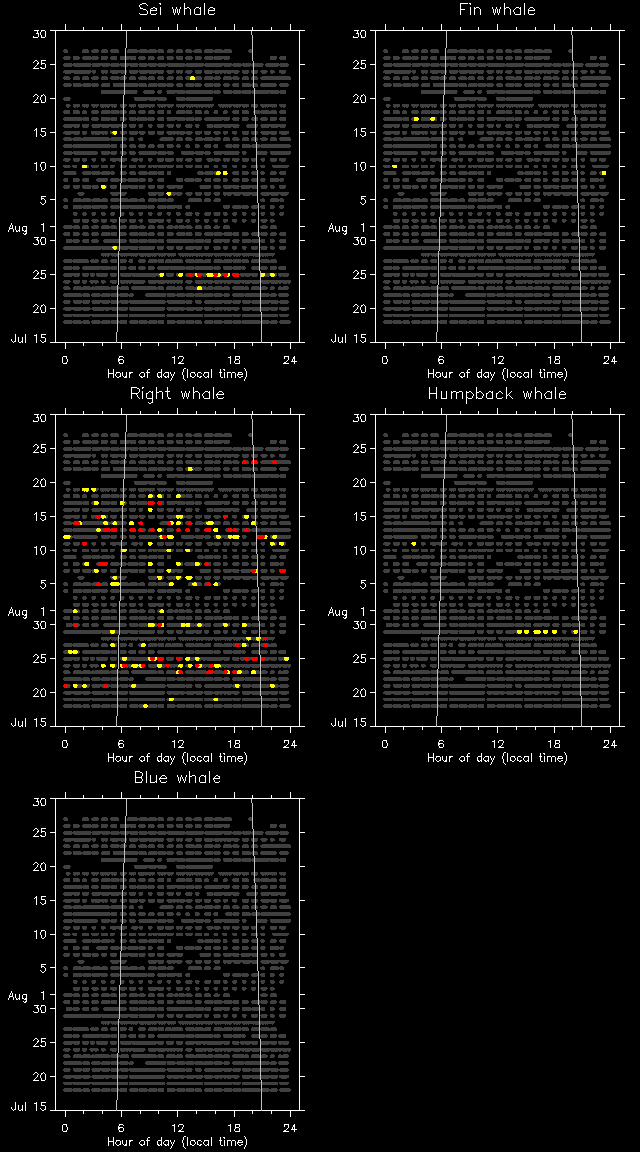Autonomous Real-time Marine Mammal Detections
Woods Hole Oceanographic Institution
Southern Gulf of St Lawrence, Summer/Fall 2020
Study objectives
A Slocum G3 glider was deployed in the southern Gulf of St Lawrence to conduct a near real-time survey for baleen whales, including the critically endangered North Atlantic right whale, and their prey in dynamic fisheries management areas.
Principal Investigators: Kimberley Davies (University of New Brunswick), and Christopher Taggart (Dalhousie University)
Analyst: Delphine Durette-Morin (Dalhousie University)
Platform location:

Analyst-reviewed species occurrence maps:

Daily analyst review:
| | Detected |
| Possibly detected |
| Not detected |
Time series:

Diel plot:

Recent bacgkground noise:

Links to detailed information:
Automated detection data
DMON/LFDCS Diagnostics
Platform diagnostics
Questions
Please email Mark Baumgartner at mbaumgartner@whoi.edu. For a general desciption of the detection system and the autonomous platforms, visit dcs.whoi.edu.
Acknowledgements
The Slocum glider was expertly prepared by the Coastal Environmental Observation, Technology and Research (CEOTR) glider program in Halifax, Canada. Funding for this research was provided by the joint Fisheries and Oceans Canada/ National Science and Engineering Research Council of Canada's Whale Science for Tomorrow program, and the Marine Environmental Observation, Prediction and Response Network of Centres of Excellence. Support for the development and testing of the DMON/LFDCS was provided by the Office of Naval Research, and additional support for integration and testing was provided by the NOAA National Marine Fisheries Service Advanced Sampling Technologies Working Group in collaboration with the Northeast Fisheries Science Center's Passive Acoustics Research Group (leader: Sofie Van Parijs).
Home




